Related Research Articles

San Salvador is the capital and the largest city of El Salvador and its eponymous department. It is the country's political, cultural, educational and financial center. The Metropolitan Area of San Salvador, which comprises the capital itself and 13 of its municipalities, has a population of 2,404,097. The urban area of San Salvador has a population of 1,600,000 inhabitants.

Cuenca is a city and municipality of Spain located in the autonomous community of Castilla–La Mancha. It is the capital of the province of Cuenca.

A cistern is a waterproof receptacle for holding liquids, usually water. Cisterns are often built to catch and store rainwater. Cisterns are distinguished from wells by their waterproof linings. Modern cisterns range in capacity from a few litres to thousands of cubic metres, effectively forming covered reservoirs.

Barrax is a municipality in the province of Albacete. This province belongs to the Autonomous Community of Castile-La Mancha (Spain). It is located on the plateau begins the Alcaraz mountain range. It is a mainly agricultural town surrounded by large areas of cereals.
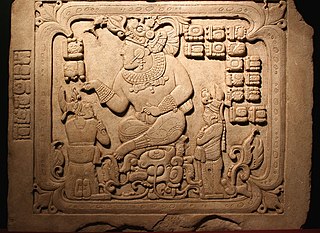
Cancuén is an archaeological site of the pre-Columbian Maya civilization, located in the Pasión subregion of the central Maya lowlands in the present-day Guatemalan Department of Petén. The city is notable for having one of the largest palaces in the Maya world.

The Albaicín, also known as Albayzín, is a district of Granada, in the autonomous community of Andalusia, Spain. It is centered around a hill on the north side of the Darro River which passes through the city. The neighbourhood is notable for its historic monuments and for largely retaining its medieval street plan dating back to the Nasrid period, although it nonetheless went through many physical and demographic changes after the end of the Reconquista in 1492. It was declared a World Heritage Site in 1994, as an extension of the historic site of the nearby Alhambra.
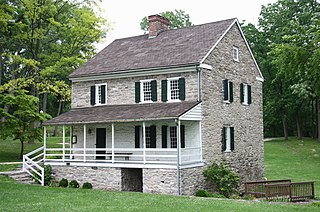
The Hager House is a two-story stone house in Hagerstown, Maryland, United States that dates to c. 1740. The house was built by Jonathan Hager, a German immigrant from Westphalia, who founded Hagerstown. The basement contains two spring-fed pools of water, providing a secure water source. Hager sold the property, then known as Hager's Fancy to Jacob Rohrer. The house remained in the Rohrer family until 1944, when it was acquired by the Washington County Historical Society. The restored house was given to the City of Hagerstown in 1954 and opened to the public in 1962 as a historic house museum.
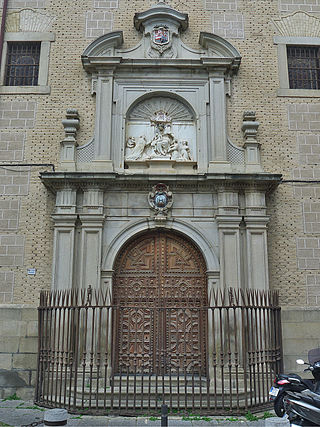
The Colegio de Doncellas Nobles is a former girls' school in Toledo. It was founded in 1551 by the archbishop of Toledo and cardinal Juan Martínez Silíceo. The project, which had as its patron the king Philip II as well as the archbishop, had as its object the education of young women to be good mothers. Some came from humble families and others from noble families from all over Europe. They were expected to be of "clean blood". Funding was provided for the dowries of former pupils.
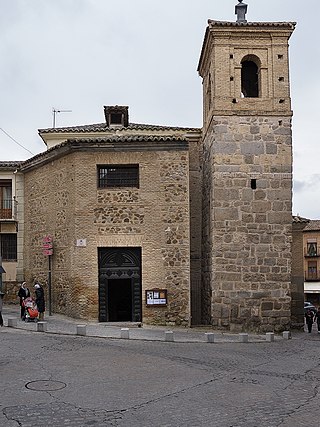
The Iglesia de El Salvador is a church in Toledo, Spain completed in 1159.

Torre d'en Galmés is a Talayotic site on the island of Menorca, between Alaior and Son Bou, Menorca. The town developed from the start of the Talayotic era and expanded until the end of the Roman occupation, after which it was abandoned. Buildings were reoccupied and adapted by Muslim refugees from the Reconquista until the end of the Muslim occupation of the island.

The Museum of Santa Cruz is an art, archaeology and ethnographic museum located in the historic centre of the city of Toledo, Spain. It exhibits collections pertaining to the province of Toledo, including works painted by El Greco in the city of Toledo.

Nabatean architecture refers to the building traditions of the Nabateans, an ancient Arab people who inhabited northern Arabia and the southern Levant. Their settlements—most prominently the assumed capital city of Raqmu —gave the name Nabatene to the Arabian borderland that stretched from the Euphrates to the Red Sea. Their architectural style is notable for its temples and tombs, most famously the ones found in Petra. The style appears to be a mix of Mesopotamian, Phoenician and Hellenistic influences modified to suit the Arab architectural taste. Petra, the capital of the kingdom of Nabatea, is as famous now as it was in the antiquity for its remarkable rock-cut tombs and temples. Most architectural Nabatean remains, dating from the 1st century BC to the 2nd century AD, are highly visible and well-preserved, with over 500 monuments in Petra, in modern-day Jordan, and 110 well preserved tombs set in the desert landscape of Hegra, now in modern-day Saudi Arabia. Much of the surviving architecture was carved out of rock cliffs, hence the columns do not actually support anything but are used for purely ornamental purposes. In addition to the most famous sites in Petra, there are also Nabatean complexes at Obodas (Avdat) and residential complexes at Mampsis (Kurnub) and a religious site of et-Tannur.
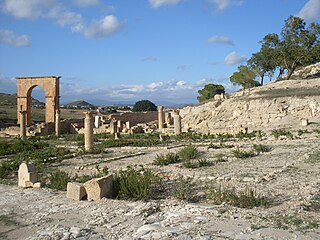
Pheradi Majius is a locality and archaeological site in Tunisia located at 36.250003°N 10.397047°E near the modern town of Sidi Khalifa in Sousse Governorate, Tunisia that is located at 36° 14′ 58″ N, 10° 23′ 57″E.
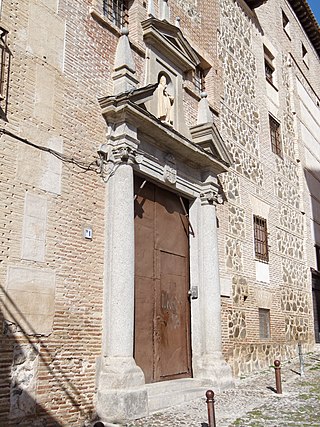
The Convento de San Clemente is a Renaissance convent located in the city of Toledo, in Castile-La Mancha, Spain. It was founded in the 13th century during the reign of Alfonso X of Castile the Wise. Inside the building there are a Roman cistern, Mudéjar architecture, remains of the Palacio de los Cervatos and many decorative elements.
The Roman baths of Toledo or Roman thermae of Amador de los Ríos are ruins of Roman thermae located in the city of Toledo in Castile-La Mancha, Spain. The baths can be seen as part of the system of supplying clean water to the city. From the scale of the surviving infrastructure, they are assumed to have been a public facility.
The Roman vaults of Nuncio Viejo are a Roman vaults located in Calle Nuncio Viejo street, in the city of Toledo, Castile-La Mancha, Spain
The Jewish House is located in the heart of the Jewish quarter of Toledo, in Castile-La Mancha, Spain. It was built in the 14th and 15th centuries. The two areas of main interest are the courtyard, which retains a multitude of yeserias, and above all, the basement that was possibly a Jewish liturgical bath or mikveh, whose function was spiritual purification and preparation for some important event in the life of a Jew. During restorations of adjacent rooms, Almagra style hydraulic plastering has been uncovered, as well as a cistern, all of which support the theory about its use.

Old Town of Cáceres is a historic walled city in Cáceres, Spain.
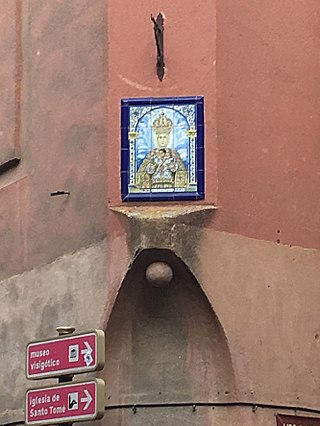
Before the standardization of modern plumbing, 2 common ways existed to access water in Toledo, Spain. These include the Tagus river that runs alongside the city, water wells and water reservoirs. Water wells and reservoirs were generally placed inside the city centre, or in some cases, individual housing. They were generally denoted by a water well or reservoir indicator (pictured). Generally the indicators consisted of small stone balls. In cases of a fire, the public would know who had a water well or reservoir. Many streets that had these wells/reservoirs were entitled as such, with many sharing the name "Well Street".
Subterranean Toledo is an underground city in Toledo, Spain made up of wells, caves, Roman, Arabic, and Jewish baths, as well as cemeteries.
References
- ↑ consorciotoledo.org. "POZO DEL SALVADOR".
- ↑ Consorcio de Toledo. Rutas Patrimonio Desconocido (PDF). pp. 22, 23.

